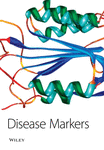Platelet-Stored Angiogenesis Factors: Clinical Monitoring Is Prone to Artifacts
Abstract
Background: The analysis of angiogenesis factors in the blood of tumor patients has given diverse results on their prognostic or predictive value. Since mediators of angiogenesis are stored in platelets, their measurement in plasma is sensitive to inadvertent platelet activation during blood processing.
Methods: Variants of blood withdrawal and plasma preparation were evaluated by ELISA for the detection of TSP-1, PF-4, VEGF and PD-ECGF. A total of 22 pancreatic cancer patients and 29 healthy volunteers were evaluated.
Results: Plasma preparation with the anticoagulant mix of citrate, theophylline, adenosine, dipyridamole (CTAD) and immediate blood processing at 4°C was required for reproducible measurements of TSP-1, PF-4 and VEGF. Blood collection by venflon or inadvertent hemolysis during blood withdrawal caused significantly elevated TSP-1 and PF4 values. When optimized plasma preparation was applied, a significant increase of TSP-1 and VEGF in cancer patients was detected (P = 0.006; P < 0.001).
Conclusion: The reliable plasma analysis of circulating platelet-stored angiogenesis factors requires preparation with CTAD at 4°C and blood collection by butterfly needle. Suboptimal procedures of plasma preparation are commonly applied in clinical monitoring of angiogenesis parameters which may account for the differences in reported plasma values and may have masked their predictive or prognostic marker potential.




